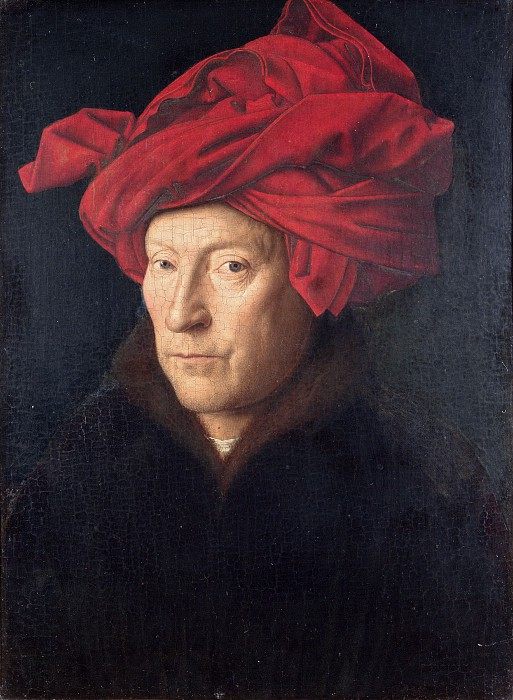| |
|
|
|
Men's portraits 15th century hall in art and painting Italian Renaissance Male Portraits The European realistic portrait was born at the Renaissance. It has occurred to the recognition of the value of the inner world of the person. The individual and the typical, the real and the ideal, harmonically merging into each other, determine the main and imperishable peculiarity of the Renaissance portrait. A person usually depicts a calm, courageous and wise, able to overcome all vicissitudes of fate, by the end of the century the image acquires features of spiritual exceptionalism and contemplation. The origins of the genre of realistic portraits date back to the late medieval period. The first stage in the history of the Renaissance portrait refers to the Quattrocento (15th century) is the period of the early Italian Renaissance. Male portraits of the 15th centuryThe 15th century was a time of Renaissance and Renaissance, and in the art of that time, the male portrait became more realistic and profound compared to previous eras. These portraits often depicted prominent personalities, aristocrats, artists and important characters of the time.
Characteristic features of male portraits of the 15th century include:
1. Realism: The artists of that time sought to convey the appearance and personality of their models as accurately as possible. They used perspective, chiaroscuro and detail to create more picturesque and realistic images.
2. Clothing and style: The men in the portraits were often depicted in luxurious clothes reflecting their social status and wealth. They often wore traditional clothes of their time, such as noble clothes or costumes that reflected the fashion of the time.
3. Expressiveness of the face: An important aspect of the portraits was the transfer of expressions and emotions through the faces of the characters. The artists sought to convey the individuality and psychological portrait of their models through facial expressions and gaze.
4. Detail: Male portraits of the 15th century were usually characterized by great attention to detail, from the smallest curves, lines and textures, to the expression of wrinkles and beards.
This is only a general characteristic, the specific details of the male portrait of each particular artist may vary.
|
|
Pictures:
Portrait of a Man :: Robert Campin
 |
Guillaume Budi :: Jean Clouet
 |
Portrait of Edward Grimston :: Petrus Christus
 |
Portrait of a Fat Man :: Robert Campin
 |
Portrait of Francesco delle Opere :: Perugino
 |
Portrait of a Man
 |
The Man with the Carnation :: Jan van Eyck
 41x31 sm
Artist: Jan van Eyck
Where is: Berlin Picture Gallery of Old Masters, Berlin (Gemäldegalerie, Berlin). |
Portrait of a man in a red turban (Self-portrait?) :: Jan van Eyck
 1433. 26x19 sm. Artist: Jan van Eyck Where is located: National Gallery, London (National Gallery, London). |
Papal Legate Cardinal Niccolo Albergati :: Jan van Eyck
 1431-32 1431-32
Artist: Jan van Eyck
Where is: The Kunsthistorisches Museum, Wien |
Hide Comments (4)
|
|
|
Home-artlib >
|
|
|
|
|
|
|
|
|
Men's portraits of the 15th century make a slightly depressing impression, they portray the heroes as very serious, if not gloomy. Probably it is not the fault of the artists or of the characters themselves, but it reflects the lifestyle and customs of the time. The technique of the image also does not add them the attractiveness - faces often look angular, with a sidelong glance, but in any case it is progressive for it's time.
1
2
Hans Holbein the Younger (1497 - 1543). Northern Renaissance
Hans Holbein the Younger — an artist of the German Renaissance, hardly does any religious painting at all, and was less connected with medieval tradition than other German artists. The most powerful part of Holbein's work is portraits, always painted from life, sharp-witted, sometimes ruthless in their characteristics, cold-eyed but exquisite in colour. In the early period, the portraits were less vivid, ceremonial, and in the [Expand]
The last years of his life Holbein spent in England, at the court of Henry VIII, where he was a court painter and where he painted his best portraits.
Holbein was not only a painter but also a magnificent graphic artist, who worked a lot on engraving. His series of woodcuts “The Triumph of Death” (“Dance of Death”) especially glorified.
Holbein's creation is important not only for Germany but it has also played a very important role in the formation of the English portrait school of painting.
3
Tags: male portrait, dark background, brown coat, red turban, blue eyes, thin lips, dimples, wrinkles, high collar
4